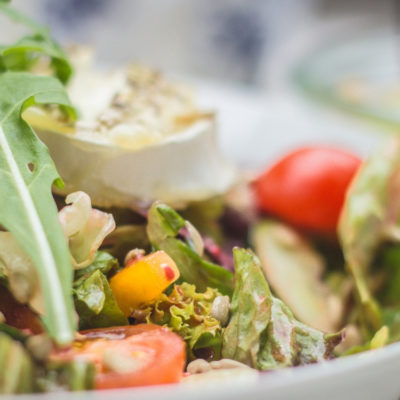Alright, so you’ve decided it’s time to get your diet in order. You’ve got that big event coming up and want to look good and feel fabulous. But how to achieve it? Should you adjust your macros, watch your food group serves or count calories?
First of all, what is the difference between macros, serves and calories?
Macros – short for macronutrients – means ‘big’ nutrients otherwise known as carbs (carbohydrates), protein and fats, as opposed to micronutrients like vitamins and minerals.
All food is made up of a mixture of carbs, protein and fats. They are digested – broken down by mechanical chewing in the mouth and mixing in the stomach with stomach acid and digestive enzymes – to their constituents: glucose, amino acids and fatty acids which are absorbed from the digestive tract into the bloodstream and used by the body to provide energy in the form of calories or kilojoules.
Every gram of macro provides a set amount of energy:
- 1 gram of carbohydrate gives us 17kJ of energy
- 1 gram of protein gives us 17kJ of energy
- 1 gram of fat gives us 37kJ of energy
- And 1 gram of alcohol also gives us 29kJ of energy
What do you notice from this?
Carbs and protein give the same amount of energy gram for gram. Fat gives us more than double the energy per gram so to cut back on energy (read kilojoules or calories) cutting back on fat gives us more bang for our food buck. And look! Alcohol has almost as much energy as fat! Cutting back on alcohol can cut energy intake, too!
Okay, so adjusting your macros is kind of like calorie counting anyway?
Yes.
Protein and fat fill you up for longer so making sure you get enough of them to make you feel satisfied and stop you from ransacking the house for snacks is a good thing. Low GI (glycaemic index) carbs will also help give you that feeling of satiety.
And what about serves of food groups?
As I said, all our foods are made up of carbs, proteins and fats. They’ve got varying quantities of these plus other things which give flavour, aroma, consistency and texture – vitamins, minerals, other chemicals, fibre and water. Foods can be divided into the food groups which are based on the main nutrients they provide our body. In Australia the Australian Guide to Healthy Eating provides us with guidance on the food groups:
- Grains – include bread, breakfast cereals, pasta, rice and other grains
- Vegetables – leafy greens, starchy vegetables and every type in between including legumes and lentils
- Fruit – all the fruit you can imagine
- Protein foods – red meat, poultry, fish and seafood, eggs, nuts, legumes and lentils (yes, these do fall into 2 food groups), tofu and tempeh
- Dairy and calcium fortified plant-based alternatives – milk, yoghurt, cheese from dairy milk or calcium fortified plant-based alternatives like soy, oat and rice
- Fats – oils, margarines and butter
All the other stuff we tend to eat and drink – cakes, biscuits, slices, treat foods, chocolates, lollies, soft drinks, cordial, energy drinks, chips, hot potato chips, fried foods, sausages and fatty foods, and alcohol are all tossed in the ‘extras’ or ‘discretionary foods’ group. It’s nice to have some of these foods sometimes but they don’t give many nutrients while they give lots of energy (kilojoules or calories).
Don’t restrict ‘extras’ entirely but don’t include them in your day to day eating. And don’t judge yourself or others when they are eaten.
Getting enough of each food group for your level of physical activity and your individual health requirements at your stage of life means you receive all the nutrients your body needs. That’s where a dietitian can help you work out how much is right for you. And then use goal setting (check out this blog on goal setting) to help you achieve your goals.
Understanding your body’s needs is one step towards having a healthy lifestyle.
Okay, so to sum up:
- Eating healthy can be achieved in a number of different ways.
- To lose weight you can count calories, serves or macros.
- You need a bit of every food group.
- How much of each food group you need depends on your stage of life, level of physical activity and health requirements. Get the help of a dietitian to work that out.
See you next week.
register here to receive Dale’s blog update in your inbox each week.
contact dale if you would like help to work toward achieving your health goals.






Comments (1)